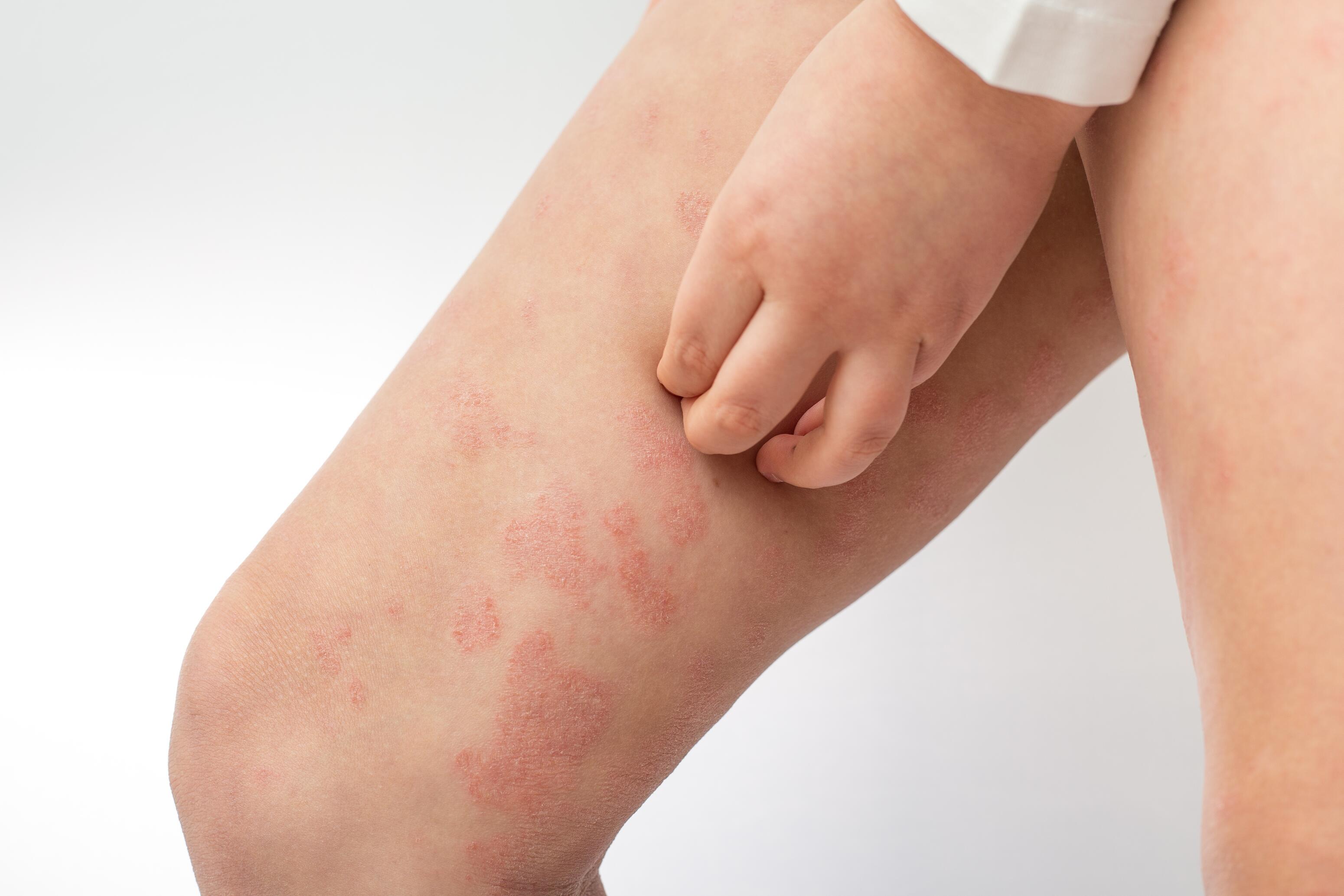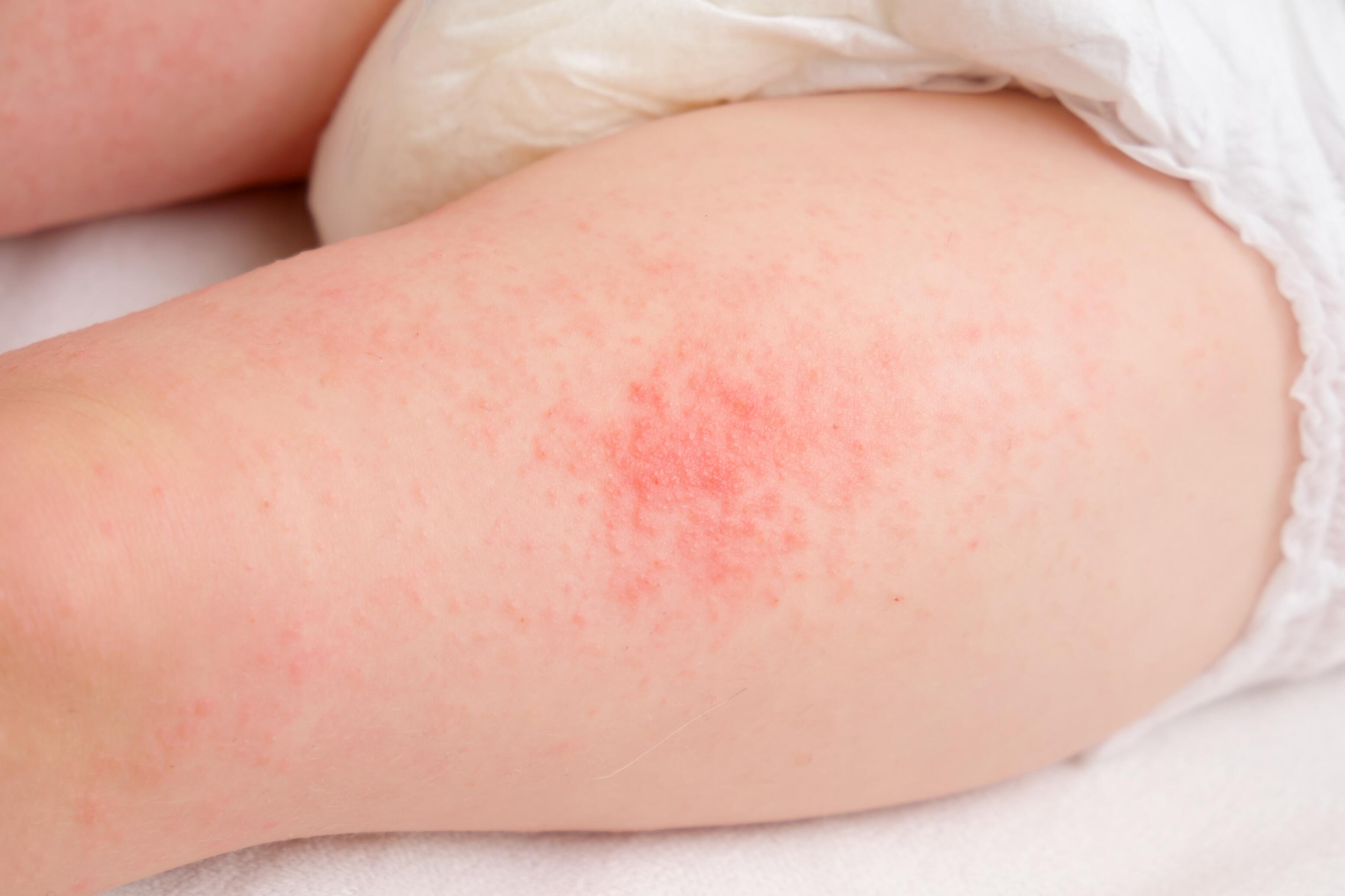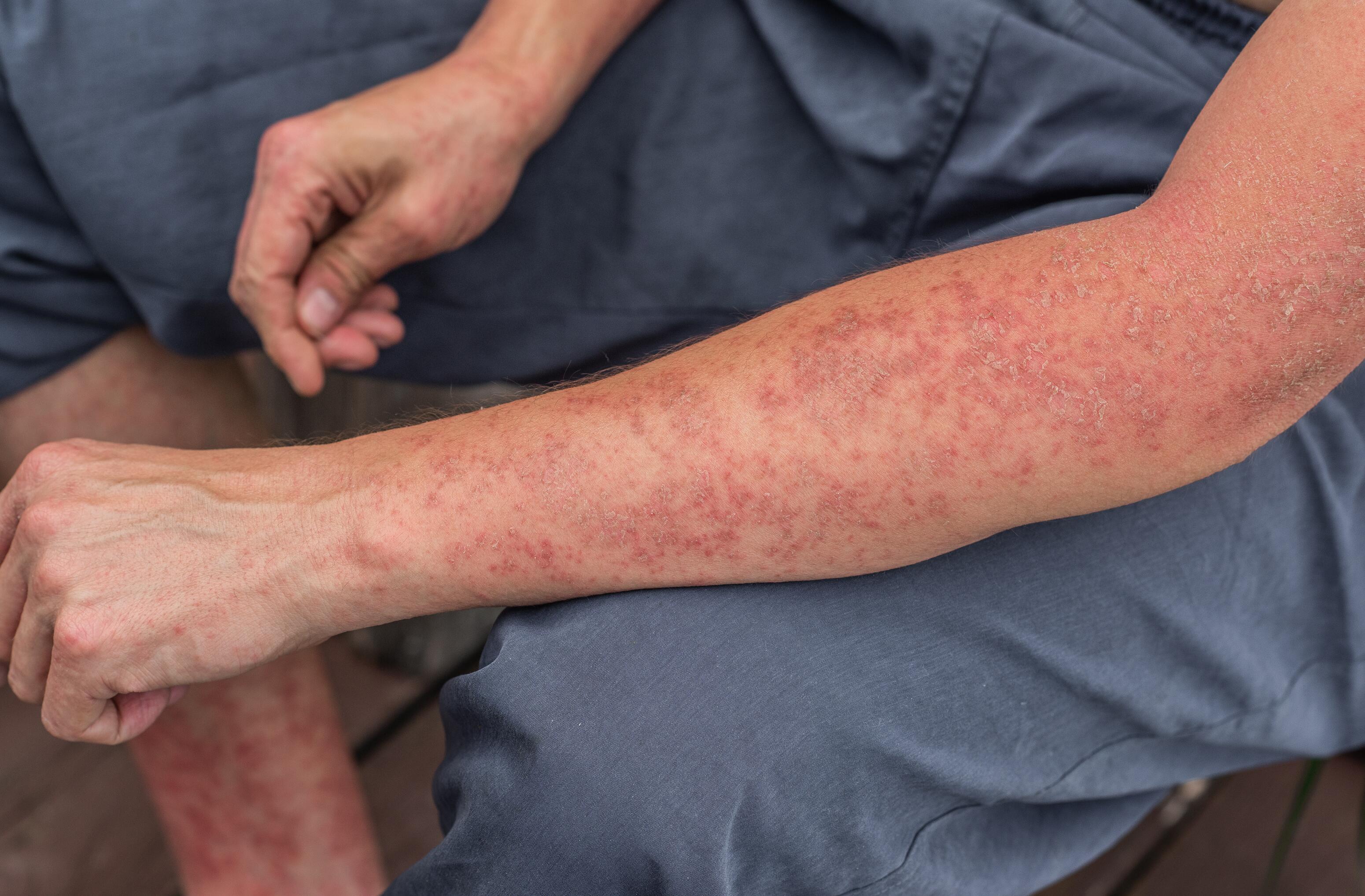Eczema and urticaria: Identifying and Managing Them Successfully
Discover the differences between eczema and hives, including their symptoms, treatments, and advice for improved day-to-day management.
What are the differences between eczema and urticaria ?¹ ²
Although eczema and hives are common skin conditions that cause itching and redness, their causes, symptom progression, and treatment strategies differ significantly.
Understanding these differences is crucial for accurate diagnosis and treatment.
Eczema is a typically chronic inflammatory skin condition marked by severe itching. It's often linked to genetics, environmental triggers, and immune factors. The most prevalent type, atopic dermatitis, is mainly seen in babies and children.
Urticaria, or hives, on the other hand, presents as red, swollen welts (oedema) that can quickly emerge and vanish across various body areas. Causes range from allergic reactions and infections to sometimes physical triggers like pressure or warmth.
Managing hives primarily focuses on easing the immediate symptoms, especially with antihistamines, and avoiding future triggers. Eczema management, however, demands a longer-term strategy that includes regular skin moisturisation and flare-up prevention.
What's Urticaria, and What Triggers It ?¹
Characteristics of Urticaria
Outbreaks of red or pinkish welts characterise hives, resembling the effect of a nettle sting. Accompanied by itchiness, these marks result from skin swelling and frequently shift around. Typically, they vanish within 48 hours.
Sometimes, hives are joined by angioedema, which affects the mucous membranes, notably on the face. While usually harmless, it can occasionally lead to severe respiratory issues, known as Quincke's oedema. This condition requires immediate medical attention.
Urticaria splits into two categories:
- Acute urticaria is marked by an isolated flare lasting hours to days, potentially recurring in different spots, and usually non-allergic.
- Chronic urticaria is characterised by persistent or recurrent outbreaks over at least six weeks. It's a non-allergic skin inflammation, sensitising the skin's mast cells to a variety of non-allergic stimuli. It might come with abdominal pain, joint discomfort, and fever. Chronic hives' course can last months or years.
A Mechanism Different from Eczema
Urticaria results from a complex reaction involving mast cells, key immune system cells in the skin, and mucous membranes. These cells contain an inflammation molecule: histamine.
When mast cells are activated, they release histamine, which causes blood vessel dilation and increased permeability. This reaction leads to fluid and cell infiltration into the surrounding tissues, causing oedema. This mechanism is at the root of urticaria patches.

Identifying Hives¹
Diagnosing hives hinges on the sudden emergence of raised, red, or skin-toned plaques or papules, often with severe itchiness. These marks vary in size and can merge into larger patches.
A hallmark of hives is the lesions' fleeting nature, vanishing and reappearing within hours. Pressing a welt typically turns it white. Unlike other skin eruptions, hives don't usually leave a lasting mark on the skin.
If hives come with breathing difficulties, facial or throat swelling, or other critical symptoms, seek immediate medical help. They could indicate a severe allergic reaction, such as Quincke's oedema or anaphylactic shock.
Confirming eczema²
Diagnosing eczema involves recognising symptoms such as persistent itching, dry skin, red patches, weeping, scaling, and crusting. In youngsters, eczema primarily affects the face, neck, and outer areas of elbows and knees. In adults, eczema lesions become thicker and dryer due to lichenification, especially on the hands.
Symptoms cycle between flare-ups and remission periods, often alongside a family history of allergies.

What can cause urticaria ?¹
Here are some of the most common triggers of urticaria:
Non-Allergic Urticaria
This is the most frequent form of urticaria.
Medications
Non-allergic hives are often a direct response from the skin's mast cells to medications like antibiotics (penicillin), NSAIDs (aspirin), and hormone therapies.

Foods
Foods containing biogenic amines or histamine-releasing agents (e.g., fermented cheeses, canned goods, sauerkraut, tomatoes, fish, strawberries, food colourings, preservatives, sulphites) can induce non-allergic food hives.

Contact Urticaria
Contact urticaria, not to be confused with contact eczema, can be caused by certain plants (nettles), cleaning products, or animals (jellyfish).
Diseases
Conditions such as ENT infections, autoimmune diseases, and parasitosis can trigger hives episodes.

Physical Factors
Exposure to elements like rubbing (dermographism), cold, sun, heat, water, pressure, or vibrations can initiate physical hives.

Stress
Like eczema, stress can prompt or exacerbate hives. Understanding these triggers is essential for the prevention of urticaria.

Allergic Urticaria
Though rare, allergic hives are severe, resulting from an allergen's widespread activation of mast cells. Common triggers include insect stings, peanuts, shellfish, latex, and certain medications. Accompanying symptoms might consist of asthma attacks, vomiting, abdominal discomfort, and low blood pressure. Anaphylactic shock, the most severe form, is life-threatening and necessitates emergency care.
What are the treatments for urticaria and eczema ?
Eczema and hives are two distinct skin conditions requiring specific treatments.
Treatments for Urticaria³
Antihistamines are the cornerstone of urticaria treatment. They help reduce itching and inflammation by blocking the action of histamine.
The treatment for anaphylactic shock relies on adrenaline.
Avoiding known triggers, akin to managing contact eczema, is vital in hives prevention. This necessitates steering clear of certain foods, medications, and contact irritants. Stress management and addressing other aggravating factors are also beneficial.

Treatments for Eczema²
The treatment for eczema depends on the type of dermatitis. The main measures involve routine skin moisturisation using emollient creams or ointments, corticosteroids for flare-up control, and trigger avoidance.
In more severe cases, exceptional treatments can help control eczema symptoms.

References
1. L’Assurance Maladie. Urticaire : symptômes et causes. Ameli.fr. 2023 Oct. [Disponible sur :] https://www.ameli.fr/assure/sante/themes/urticaire/reconnaitre-urticaire
2. Nemeth V, Evans J. Eczema. In: StatPearls. Treasure Island (FL): StatPearls Publishing; 2023 Jan. [Disponible sur :] https://www.ncbi.nlm.nih.gov/books/NBK538209/
3. L’Assurance Maladie. Le diagnostic et le traitement en cas d’urticaire. Ameli.fr. 2023 May. [Disponible sur :]
https://www.ameli.fr/assure/sante/themes/urticaire/diagnostic-traitement
- Discover Eczema Spots: How to Identify, Treat, and Prevent Them?
Eczema Spots: How to Identify, Treat, and Prevent Them?
- Discover Allergic or Irritative Contact Dermatitis: Everything You Need to Know
Allergic or Irritative Contact Dermatitis: Everything You Need to Know




